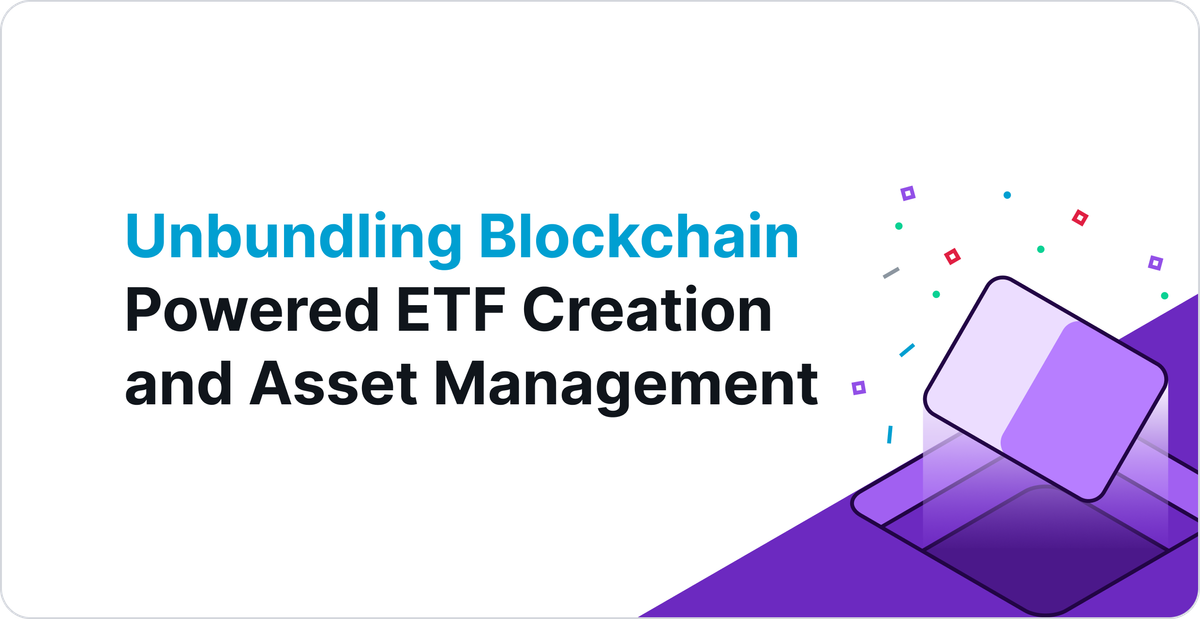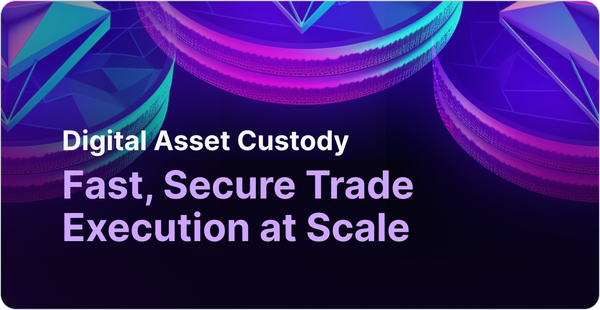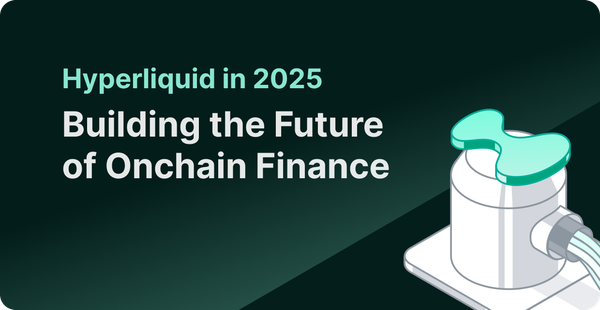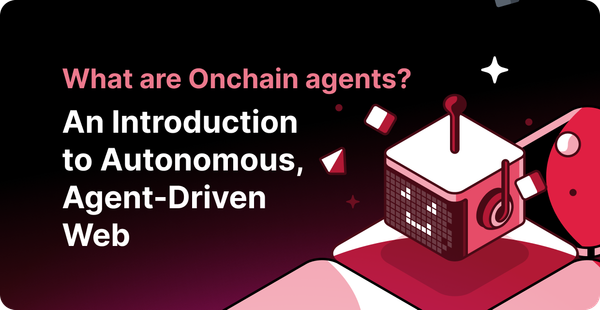Unbundling Blockchain-Powered ETF Creation and Asset Management
Discover how blockchain is revolutionizing asset management and ETFs, enhancing efficiency and redefining regulatory compliance.

As the asset management industry, valued at a hefty $373.69 billion in 2022, is set to grow at a CAGR of 34.7% between 2023 and 2030, the anticipation of Ethereum ETF approvals is electrifying the financial markets. The potential development, aimed at bringing regulated blockchain investments to a broader audience, could significantly impact the sector by enhancing liquidity and opening up new investment avenues.
Despite its rapid growth, the asset management industry still grapples with long-standing challenges such as increased transaction costs and delayed transactions. However, the integration of blockchain technology is poised to revolutionize these processes, promoting efficiency and reducing overheads. Venture capital interest in blockchain has surged recently, with applications in asset management—such as RWAs, derivatives, lending, and more—seeing their Total Value Locked (TVL) double or even triple during Q1’24, according to our recent OnChain Report.
Ever wondered how blockchain can streamline your asset management processes? Let’s break it down. In this article, we'll explore how blockchain transforms the industry, examine the regulatory challenges asset managers face, and discuss how QuickNode's services help overcome these obstacles.
5 Ways Blockchains are Transforming Asset Management and ETF Creation
By utilizing blockchain, asset managers can reduce the number of intermediaries and manual steps and make their processes more efficient.
1. Automates Reconciliation Processes
The custody process in asset management and ETFs often involves manual reconciliation of ownership records. These multi-step processes can lead to human error and increased costs.
However, blockchains automate these processes with smart contracts. This reduces manual efforts while providing a transparent audit trail and enhancing data integrity.
2. Real-time Portfolio Adjustments
Blockchain smart contracts can automatically adjust asset allocations and rebalance portfolios based on criteria like market changes, a client's financial situation, or risk thresholds.
If a client's risk tolerance decreases, the smart contract can shift holdings from volatile to safer assets. This reduces operational costs and allows asset managers to provide tailored services to clients.
3. Streamlines KYC and Client Onboarding Processes
The traditional KYC process is slow and cumbersome. Client data is siloed and stored across various databases, forcing financial institutions to gather information from multiple sources.
Blockchain technology offers a solution by creating a decentralized ledger for secure and transparent storage of all KYC data. This allows authorized institutions and regulators to efficiently access the latest information on each client in one place.
4. Accurate Tracking of Asset Ownership
Accurate ownership tracking is crucial for asset management, especially ETFs, to ensure that the fund accurately reflects its underlying assets. Discrepancies due to mismanagement or errors can erode fund performance and investor confidence.
Blockchain cuts through this risk as its immutable nature and real-time updates ensure that asset ownership records are always accurate and up-to-date. This eliminates errors and tampering risks.
5. Reduces Transaction Settling Time
High transaction settling times lead to issues like counterparty risks, reduced liquidity due to tied-up assets, and increased operational costs due to manual reconciliation and oversight processes.
But blockchains facilitate near-instantaneous settlement of transactions through smart contracts, which automate processes and reduce the time window of counterparty risks.
Regulatory Challenges Faced by Asset Managers Using Blockchains
Regulatory bodies mandate detailed reports on trading activities and client accounts, requiring firms to perform regular audits to report discrepancies promptly.
Blockchain technology enables firms to meet these regulations with its immutable and automated record-keeping which provides a tamper-proof, transparent audit trail.
However, asset managers using blockchain technology can still run into compliance issues due to challenges like:
- Infrastructure management: Regulators require that financial institutions maintain robust, secure, and compliant IT infrastructures. However running full blockchain nodes requires substantial computational resources, including storage, processing power, and bandwidth. This can be resource-intensive and costly for financial institutions.
- High transaction volumes: Financial institutions must provide real-time access to accurate and up-to-date data for reporting and compliance purposes. However, as transaction volumes increase, blockchain networks can become strained, leading to potential delays and reporting inaccuracies.
- Data integration: Compliance systems must ensure data integrity and consistency across all records to meet regulatory standards. However integrating blockchain data with existing compliance systems is complex and becomes even more challenging with increasing transaction volumes as data needs to be standardized and integrated without errors.
- Real-time data streaming: Directly pulling data from blockchain nodes can be slow and inefficient, especially when dealing with large volumes of data.
- Data security and redundancy: While the data recorded on a blockchain is immutable, the nodes that validate and store this data can be vulnerable to attacks if the firm doesn’t have robust security measures in place.
- Blockchain reorganizations: A blockchain reorganization (reorg) can lead to temporary inconsistencies in the blockchain data, as transactions that were previously considered confirmed may become unconfirmed or may even be omitted from the new chain. This can create discrepancies in records that need to be reconciled and lead to potential errors in compliance reporting and audits.
QuickNode’s Blockchain Services Help Eliminate Regulatory Issues
QuickNode offers a suite of secure, scalable, and efficient solutions for infrastructure management, real-time data integration, and data consistency. These functionalities address the regulatory compliance challenges.
- Managed infrastructure: QuickNode provides fully managed node services, taking care of setup, maintenance, updates, and scalability. This includes automatic handling of blockchain forks, upgrades, and network interruptions, ensuring that the infrastructure remains compliant with regulatory standards without requiring constant oversight from internal teams.
- Scalable systems: Quicknode’s Clusters can manage network congestion effectively and scale dynamically to handle increased transaction volumes. We also guarantee 99.99% uptime for our clusters which helps firms comply with regulatory standards that mandate continuous data availability.
- Real-time data streams: QuickNode’s Streams provide real-time access to blockchain data. This capability reduces latency and ensures that compliance reports are based on the most current data.
- Predictable pricing: QuickNode offers predictable pricing models for its clusters. This helps institutions to manage compliance-related expenses without unexpected financial burdens.
Blockchains are Making Asset Management Efficient and Compliant
The integration of blockchain technology is transforming the asset management industry by enhancing efficiency, reducing costs, and ensuring accurate and transparent record-keeping.
While regulatory challenges remain, QuickNode provides comprehensive solutions to address these issues. We offer managed infrastructure, scalable systems, real-time data streams, and predictable pricing to help you stay compliant and operationally efficient.
For a deeper understanding of how you can integrate blockchain into your financial services, join our upcoming webinar on next-generation asset management.

About QuickNode
QuickNode is building infrastructure to support the future of Web3. Since 2017, we've worked with hundreds of developers and companies, helping scale dApps and providing high-performance access to 30+ blockchains. Subscribe to our newsletter for more content like this, and stay in the loop with what's happening in web3!





